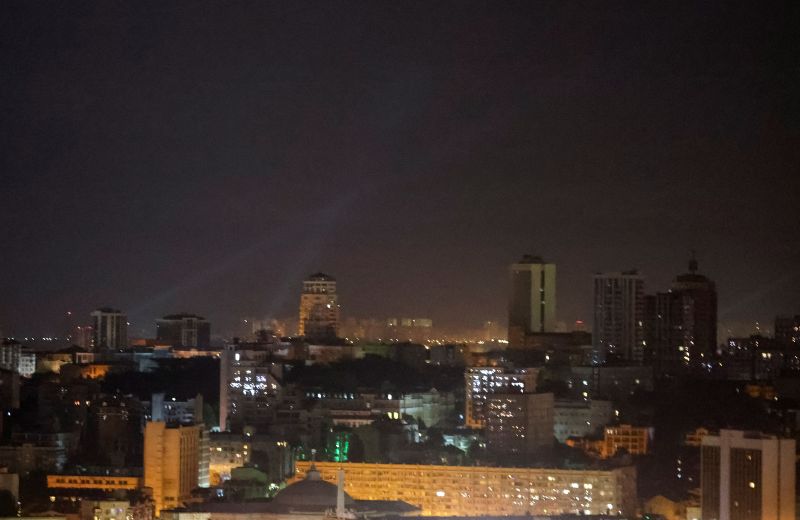In the early hours of a day that will inevitably be etched into the annals of Ukrainian history, local authorities announced the discovery of drone debris outside Ukraine’s parliamentary building. The incident occurred amidst an extensive offensive staged by Russia that saw a formidable fleet of 67 drones deployed across Ukrainian territory.
Dubbing this assault an unprecedented stroke of hostility, the Ukrainian government brought to light damning evidence of Russian forces’ relentless aggression in the form of aerial strikes implicating the use of advanced drone technology.
The drone debris found outside the Verkhovna Rada—the Ukrainian parliament—served as a tangible reminder of Russia’s audacious attack. Eye-witness accounts spoke of an eerie percussion from the skies moments before ruin came raining down from above in the form of scattered drone debris. It is a haunting, tangible testament to the devastating power and exacting precision of modern warfare technology.
The extent of the damage faced by the Ukrainian parliament, however, extends beyond just physical ruin. More critical is the psychological toll this attack has underscored, undermining the relative safety previously enjoyed by residents and political figures.
This grand-scale use of drones for assaults is not an isolated incident. It merely serves as another chapter in Russia’s technological warfare, reportedly instrumental in previous conflicts, including the Syrian Civil War. However, this recent attack is a clear statement of Russian intent to expand and optimize its drone deployment in war theatres.
The Russian military’s strategy pivots on a comprehensive, nationwide assault undoubtedly meant to cripple Ukraine’s defence capabilities and suppress its governmental functions. It was a telling demonstration of Russia’s intent and capacity to underscore its positions using modern technology, sparking international concern about warfare paradigms shifting towards robotic assault vehicles.
The drones, armed with precision-strike capabilities, instigated widespread panic and devastation. In a clear escalation of hostilities, these remotely controlled vehicles defied traditional conflict mechanisms, symbolizing the transformation of warfare in the 21st century.
In light of this incident, there has been a global outcry for nations to reassess international regulatory norms for the use of drones in warfare. Current laws of armed conflict obligate states to distinguish between legitimate military objectives and civilians, yet the efficient use of drone technology for strategic defense or assault blurs these lines considerably.
Importantly, the drone debris’s discovery brings into focus the immense potential for the chaotic misuse of technological advancements in our era. As the world grapples with this new warfare reality, the debris stands as an ominous reminder of the challenges posed by unfettered technological aggression and the necessity for an international commitment to oversee the just and moral use of such technologies in the future.
While it’s too early to predict the inevitable aftermath of this event, it’s clear that the relationship between Ukraine and Russia has plummeted to a new low. Similarly, the international community faces daunting challenges to safeguard individuals and nations in the face of this emerging, relentless form of warfare.
The drone debris discovered outside the Ukrainian parliament is more than just the wreckage of a fallen device. It serves as a stark symbol of the perils the world faces as technology advances at an alarming pace, and the urgent need to enforce a robust international framework to govern its use. Serving as a grim reminder of the devastation that technological warfare can cause, it stresses the importance of redefining warfare protocols and drone usage ethics in our rapidly changing world.




